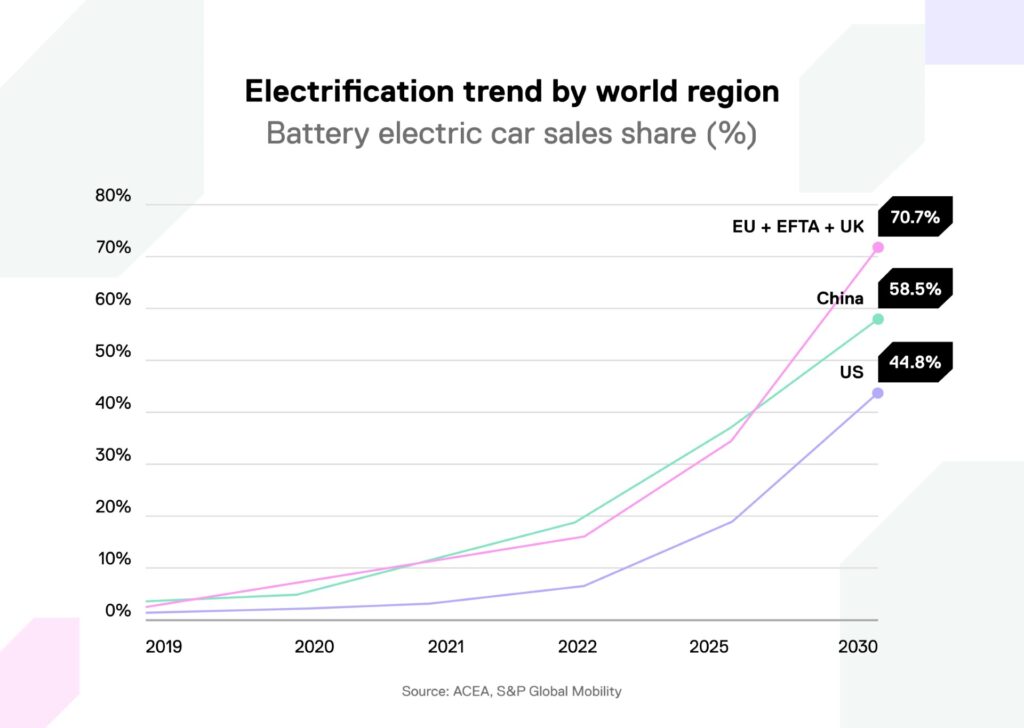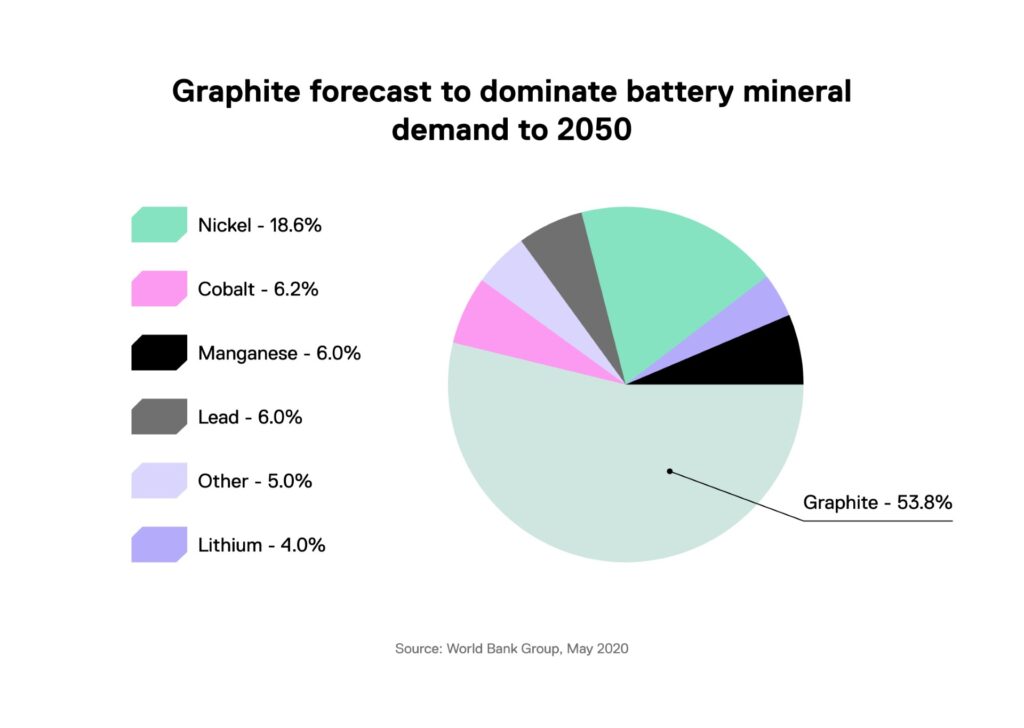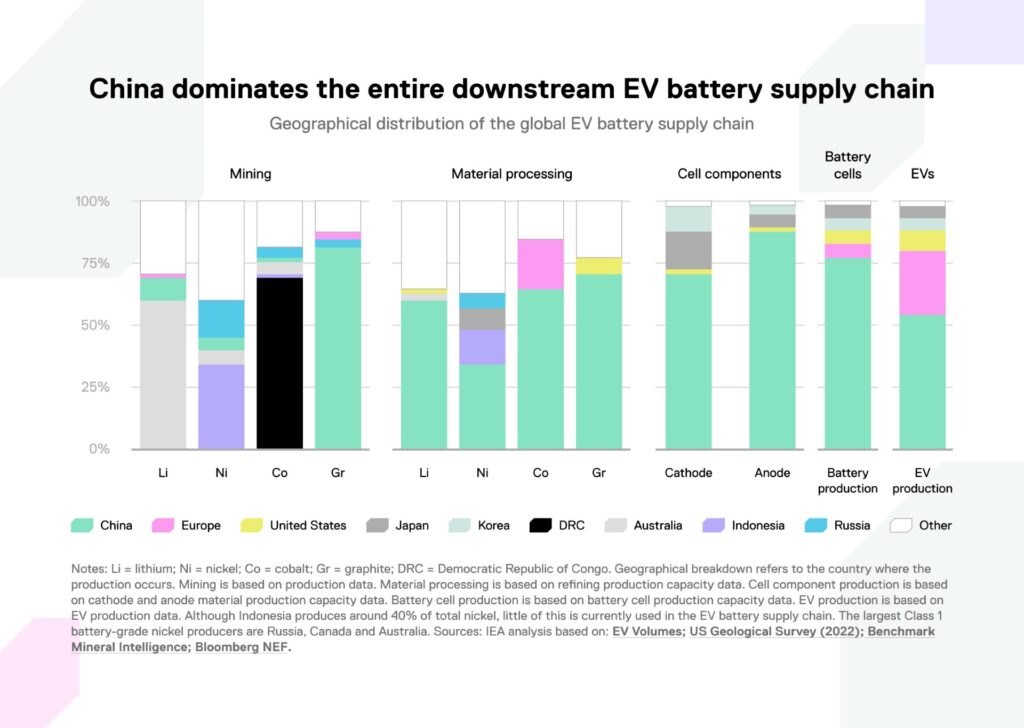In 2022, more than 26 million electric cars were on the roads, setting a groundbreaking sales record. However, this is merely the beginning. EV batteries represent the fastest-growing technology in energy storage, playing a crucial role in leading us towards a greener future.
The International Energy Agency (IEA) projects that the momentum will intensify. By 2030, over 60% of cars sold globally will be electric. This demonstrates a significant shift, backed by legislation and policies worldwide.

Can the raw material supply meet the unprecedented battery demand?
The main critical raw materials in batteries are lithium, nickel, cobalt, manganese and graphite. Lithium demand has nearly doubled since 2017, hitting 80 kt in 2021. It’s worth noting that almost half of this demand (47%) is attributed to EV batteries, marking a significant increase from 36% in 2020 and 20% in 2017.
The Democratic Republic of Congo is a leading producer of cobalt worldwide, contributing about 75% of the world’s supply. However, cobalt’s role in batteries most likely will decrease while supply rises, driven by copper and nickel mining growth.
Moving on to nickel, the total demand in 2021 amounted to 2,640 kt, and EV-related demand accounted for 7% of this total, up from 4% in 2020. Batteries require Class 1 nickel which is higher in purity compared to Class 2 nickel (<99.8% purity) and needs extensive processing. The war in Ukraine added more pressure, as Russia supplies around 20% of the world’s Class 1 battery-grade nickel.
Furthermore, graphite is a major component of the battery’s anode, making up approximately 95% of the anode market. The significance of graphite cannot be overlooked. It outstrips other components like lithium, nickel, and cobalt in volume within the battery.
Graphite is unique because it has the best balance between cost and performance compared to other battery minerals.
In fact, the average EV battery contains between 50 to 100kg of graphite. Securing the graphite supply chain is an urgent issue. It’s expected that it will dominate battery mineral demand until at least 2050.

The future is electric, but is it also affordable?
The recent surge in battery metal prices is a result of higher battery demand, supply chain challenges, and raw material scarcity. The price of lithium surged by sevenfold, while cobalt doubled in cost compared to 2021 prices.
However, the price increase of the end product, the battery, was not evident right away. Automakers use contracts that link material costs to commodity prices for major battery orders, delaying the impact. Therefore, the price increase observed in late 2021 only impacted automakers by 15% with a delay, taking effect in early 2022.
Global spending on electric vehicles in the same year reached over $425 billion, showing a 50% rise from the previous year. Consumers financed the bulk of these expenditures, with government assistance accounting for a mere 10%.

China continues to hold the crown in EV battery manufacturing
When discussing the EV revolution, it’s impossible to overlook China’s role in shaping the industry’s future. China has not only become a major player in EV production but is also dominating the entire downstream of the EV battery supply chain.
China is at the forefront of the global electric vehicle industry. This is due to its investments and advancements in raw materials and battery manufacturing.
IEA’s 2023 EV Global Outlook report indicates that China accounted for 60% of newly registered electric vehicle (EV) cars. It was the first time that China held over 50% share of global EV sales.

In conclusion, the journey towards a successful era of mobility electrification comes down to two vital pillars: the rapid expansion of raw material production capacities, together with a commitment to high environmental standards. Just as we invest in new battery technologies, we also need to put resources into securing greener supply chains of battery materials.
By harmonizing these efforts, we can pave the way for a thriving and sustainable future, where both the triumph of electrification and affordable pricing become the cornerstones of the same success story.

